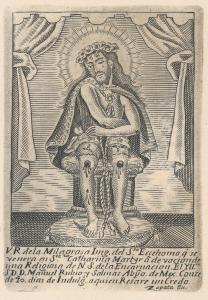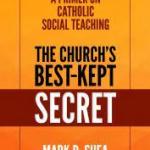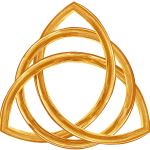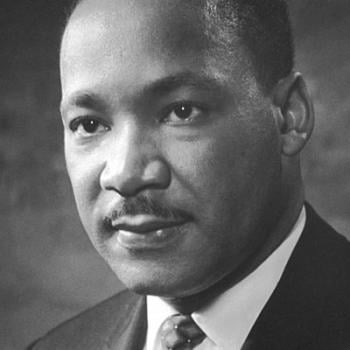
Every year during Advent and Christmas, punchy Catholic dudebros who think themselves clever clutter the Internet with memes about St. Nicholas. No, not the lovely story about how he saved three girls from being sold into sexual slavery. Much less the charming if often consumeristic modern mythology that has clustered around him as “Santa Claus.” No, what really impresses these valiant knights of social media is that St. Nicholas supposedly punched Arius at the Council of Nicea. He was punchy too, you see, so it’s holy to be punchy after all.
Confession: I’ve been that dude myself. I don’t think I’ve ever shared a meme about it, partly because I’m bad with memes and partly because by the time memes were a thing I was starting to grow out of the phase of my spiritual journey in which I thought there was something cool about punching heretics.
So I’ve been there, and as Pope Francis might say (but probably wouldn’t in this case) “Who am I to judge?” Some people do drugs in their youth, and some people share memes about heretic-punching. Hopefully we all grow out of our youthful follies.
It helps, of course, that the story is probably false. It doesn’t show up until the late Middle Ages and in the first version it isn’t Arius himself whom St. Nicholas slapped. (Yes, it was a slap, not a punch. The memelords prefer a punch, of course, because it’s manlier.) St. Nicholas’ name isn’t in any of the early lists of bishops who attended Nicea.
But as with a lot of iconic moments in history that probably aren’t actually historical, the story does reflect something very real: the willingness of historic, orthodox Christians to use violence of various kinds in response to what we believe to be heresy or blasphemy.
The shadow of Nicea
Most of us today recognize that physical violence against heretics is a bad idea. (Though I did have a disturbing argument back in 2017 with a couple of Catholics, both smart people and neither of them right-wingers, who seriously argued that we couldn’t say that burning heretics had always been morally wrong in the past.) But to be an orthodox Christian of any sort is to see the Council of Nicea in 325 as a watershed moment in the development of the Christian faith, the moment when our core beliefs about Jesus found their clearest articulation. (Though actually the Nicene Creed as we know it dates from the Council of Constantinople more than half a century later, in 381.)
In contemporary debates, someone seen as defending orthodoxy is often lauded as a “new Athanasius.” In Catholicism, one of the leading spokesmen for the more traditional wing of the Church in recent years actually is named “Athanasius Schneider,” which makes the identification particularly easy. +Schneider has explicitly invoked the Arian crisis as well as the preceding Roman persecution of the Church as analogies for what he considers the “fourth great crisis of the Church” following Vatican II. In the tumultuous years following the election of Gene Robinson as bishop in 2003 in the Episcopal Church, I heard those same analogies.
At least in terms of pugnacity and intransigence, the original Athanasius was more than a match for any of his modern disciples. Indeed, R. P. C. Hanson argues in his meticulous survey of the Arian controversy that Athanasius’ personal qualities and behavior as bishop, rather than his theological views, were the cause of his first exile at least. Hanson accuses Athanasius of using the Arian controversy as an excuse to explain his unpopularity and eventual exile (including condemnation by a regional synod of his fellow bishops), when, Hanson argues, the real reasons were initially not primarily theological at all. Athanasius accused his opponents of being “Arians” and thus gained support from those who, like himself, believed that Arianism was deadly heresy. Athanasius, like later bishops of Alexandria (and indeed like some bishops of Rome such as Damasus) was quite willing to draw on mob violence to intimidate his opponents.
Crooked lines
His successor Cyril, in the following century, was implicated in the murder of the pagan philosopher Hypatia. While the death of Hypatia has been sensationalized, Cyril’s violent rhetoric, mobilization of armed mobs of supporters, and involvement in local politics clearly played a significant role in the tragedy. And this same Cyril was the great champion of orthodox Christology against Nestorius as Athanasius had been of the divinity of Christ against Arius. Cyril rammed a condemnation of Nestorius through the Council of Ephesus, with the result that even today it’s hard to decide if Nestorius himself was really a “Nestorian” in the genuinely heretical sense.
For a long time I dismissed points like these, or at least minimized their significance. God writes straight with crooked lines, right? God can use human passions and politics to articulate the truth. That the early Councils were contaminated by political agendas and marred by violent passions doesn’t make their conclusions false. And indeed, it doesn’t. But perhaps it should complicate our appeal to those Councils. Perhaps we should focus more on the intrinsic truth and beauty of the dogmas proclaimed and less on the claim that we must believe them because of the authority of the Councils. And perhaps we should become more cautious about appealing to them as a model for how to resolve doctrinal disputes in our own times.
Rebel orthodoxy
I was afraid to go down this road for a long time because I bought into the claim that because of human sinfulness and error we need dogmatic restraints, perhaps best summarized by Richard John Neuhaus: “Where orthodoxy is optional, orthodoxy will sooner or later be proscribed.” Chesterton’s picture of the “wild truth reeling but erect” swerving among the errors was, and is, deeply appealing to me. I thought that the historical record showed that without the restraint of Church authority and discipline, the rich and rare beauty of Christian truth would erode down to a bland religious common denominator, a religion of respectability and vague spirituality without the sharp paradoxes and moral challenges of real Christianity.
But I’m no longer sure of this. Mainline white American Methodism, for instance (the Methodist Episcopal Church which became the United Methodist Church), was dominated by a highly bland version of liberalism from the late nineteenth century until relatively late in the 20th century. Evangelical Methodists survived and even throve in this environment, forming alternative institutions such as Asbury Theological Seminary (itself, to be sure, an institution with its own history of doctrinal policing) in order to train pastors. Eventually, many Methodists fell back in love with traditional Christianity. Once they gained sufficient power within the denomination, evangelicals began to flex their muscles and made a bid for control, currently leading to the formation of a new evangelical denomination when it became clear that expelling the liberals would be a difficult and messy process. Throughout the recent conflicts, conservative Methodists have used the language of orthodoxy, primarily, at this point, to describe their resistance to legitimizing same-sex relationships. They portray a failure to reaffirm the conservative position on marriage and sexuality institutionally as a potential catastrophe. And yet, it seems to me that the credibility of their version of Methodism has suffered far more from the measures they have taken to ensure its triumph than from the many decades in which they were excluded from structures of denominational power.
In Anglicanism, both evangelicals and Anglo-Catholics have often functioned as rebels and “heretics” by the standards of their own bishops. This is particularly paradoxical in the case of Anglo-Catholicism, which appeals to tradition and Church authority. The “Oxford Movement” of the 1830s taught a high view of episcopal authority, yet their own bishop disclaimed them. Anglo-Catholic clergy often used the semi-congregational structure of Anglicanism to create their own little worlds. They forged ahead with their vision of what “the Church” meant even when the actual institutional structures of Anglicanism persecuted them. And as a result, in much of the Western world (certainly in the USA), people associate “Anglicanism” today with forms of worship and belief that most Anglicans in the 1830s would have regarded as horrifyingly “Papist.” They didn’t need institutional support for their vision of orthodoxy. They won large sectors of Anglicanism over (and eventually influenced much of the rest of Protestantism as well) to their neo-patristic, deeply liturgical vision of Christianity because of its inherent beauty.
In post-Vatican-II Catholicism, a similar thing has happened. When I first became seriously interested in Catholicism in the 1990s in North Carolina, the young conservative Catholics I associated with were typically at odds with the clergy of the Diocese of Raleigh, who favored a much more liberal style of Catholicism. One traditional Catholic friend told me quite seriously, “Edwin, if you are going to become Catholic, you’re going to have to learn to ignore priests.” To pray the Rosary and adore the Reserved Sacrament, to use Latin or chant, to take scholastic theology and philosophy seriously, were acts of rebellion even though they were also marks of “traditional” or “orthodox” Catholicism. Mother Angelica of EWTN famously challenged the orthodoxy of Roger Mahony, Archbishop of Los Angeles. She succeeded in turning her upstart TV network into an alternative Magisterium to which many Catholics looked for “true “Catholicism in contrast to what they were hearing from bishops, priests, members of religious orders, and seminary professors. An entire network of Catholic institutions sprang up to provide apologetics and catechesis, imitating the networks created by conservative Protestants at the beginning of the century following their defeat in the struggle for control of the “mainline” American denominations. (The imitation may or may not have been conscious, but since a lot of people involved in creating these networks were either converts or influenced by the Charismatic movement, I think “imitation” is a reasonable word to use.)
Today, in the pontificate of Pope Francis, there are Catholics who seriously speak as if agreeing with the Pope is a mark of heterodoxy and look to figures like Schneider or Burke as truer representatives of Catholicism. Many young people in this generation, as in mine, are turning to traditional Catholicism because they find it inherently beautiful and worthy, even if ecclesiastical authorities don’t favor it.
What if the Arians had won? Or perhaps they really did. . . .
Furthermore, many Christians who see themselves as conservative and orthodox actually have a fairly loose grasp of core elements of historic orthodoxy, such as the Trinity. Some elderly friends of mine (now deceased, and may their souls rest in peace) who became Arians late in life argued to me that most Christians they knew actually held a view much like theirs. On Christian radio, preachers routinely spoke of God “sending his Son” and in general tended to treat Jesus as a distinct and lesser being compared to “God.” I agree to some extent with this characterization. In fact, one of the huge problems with popular conservative Protestant atonement theology is that it is functionally Arian–Jesus is treated as the one who reconciles us to God, rather than the Cross being the act of God reconciling the world to Himself. Even in Catholicism, where Trinitarianism is explicitly invoked constantly in the liturgy, many laypeople will speak casually of “God” and “Jesus” as if they were two entirely different beings.
In other words, the rich mystery of the Trinity is not only poorly understood (after all, none of us actually “understands” it) but frequently in practice watered down and distorted in much the ways that one might expect if Arianism had triumphed.
Suppose that, in fact, Trinitarianism had never come to be accepted as the central truth of Christianity, and had never been enforced on all Christians. Suppose it had remained officially what it arguably always has been in terms of meaningful adherence: a fascinating minority view that has inspired devotional reflection and liturgical poetry and holy living even as the majority of Christians actually held to a more simplistic sort of divine monarchism. Suppose that the institutions of the Church had pushed that more simplistic view, with Trinitarians muttering their mysterious secret in odd corners. Suppose all the holy wars, all the persecutions, all the corruptions and abuses of institutional Christianity had been committed in the name of Arianism, while here and there crazy mystics dared to dream of a God who was three-Personed Love rather than monarchical power? Suppose, in short, that the Trinitarianism of St. Gregory of Nyssa had suffered the same fate as his belief in the restoration of all beings to union with God?
I am not saying that this alternative timeline would be better than the one we have. There is much good that would have been lost. But would it, really, have been so intolerably worse as to justify the level of coercion that has historically been thought necessary to defend the Trinity and the many other rich paradoxes and mysteries of historic Christian orthodoxy?
The God who lets himself be struck
I began this post, believe it or not, on the Feast of St. Nicholas, 2021. Probably you can tell that from my opening. I have stalled on it for months, for a lot of reasons–all through Advent and Christmas and Ordinary Time and Lent. And now, we have just celebrated Holy Week and Easter. We have twice read the Passion Gospel. We have heard of God Incarnate standing before the representatives of civil and religious power and being condemned by them, and we have proclaimed that in that condemnation and suffering and death lies ultimate victory.
Instead of a saint striking a heretic, we have seen God Himself struck as a heretic.
We cannot choose the alternative timeline I sketched above, even if it would have been preferable. And quite likely it wouldn’t be. But we can choose now: are we going to follow the pattern of orthodoxy that consists in punching heretics, literally or metaphorically? Or are we going to practice an orthodoxy that allows itself to be struck, as the Second Person of the Trinity was struck? Are we going to follow the God who, in the words of Dietrich Bonhoeffer, “allows himself to be pushed out of the world and onto the Cross?”
We cannot know what would have happened if we had made this choice centuries ago. But we can see what will happen if we make it now.
Anonymous Mexican “Ecce Homo” from the Metropolitan Museum of Art, https://www.metmuseum.org/art/collection/search/752406












